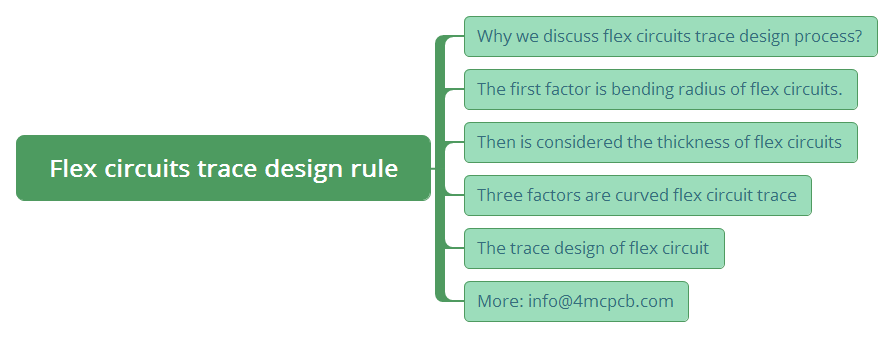Why we discuss flex circuits trace design process?
This paper will discuss flex circuits trace design process.
It’s seems very little flex circuits design issue, but it related to flex circuit electronic performance.
Some designers think that the flex circuit layout makes or breaks a PCB board.
So flex circuits trace design is very important.
The first factor is bending radius of flex circuits.
We have introduce flex circuit bend radius design is the biggest issue in flex design case.
A large bend radius is preferable for flex circuits.
But too large flex circuits bend radius also mean bigger space, and two smaller will result sharp angles that shorten its lifetime.
So to find the right flex circuits bend radius is so important.
Then is considered the thickness of flex circuits
Rich flex circuit designers will avoid the line close the hole.
Because when drill flex circuits holes may damage the circuit trace.
Move the hole or the flex circuits trace, to minimize the stress to protect flex circuit trace.
Three factors are curved flex circuit trace
There were many difficulties during flex circuit design process.
To design a good curved flex circuit trace is the biggest one.
Our flex circuits experts have told Emma may tip about this factor.
Due to those flex circuit curved traces is so complex that we will discuss this in a separate article.
But the main flex circuits curved trace rule is below:
Curved traces cause lower stress than angled ones.
The trace design of flex circuit
The curved flex circuit trace is so complex.
So this part we will discuss the normal trace design of flex circuits.
Traces should also be kept perpendicular to the overall bend and, if placed on a flex PCB with two or more layers, staggered to the top and bottom.

